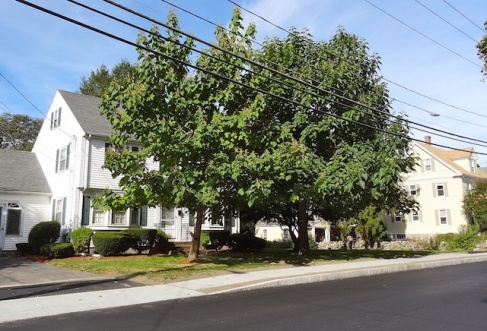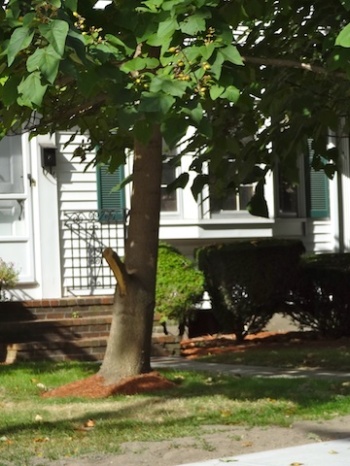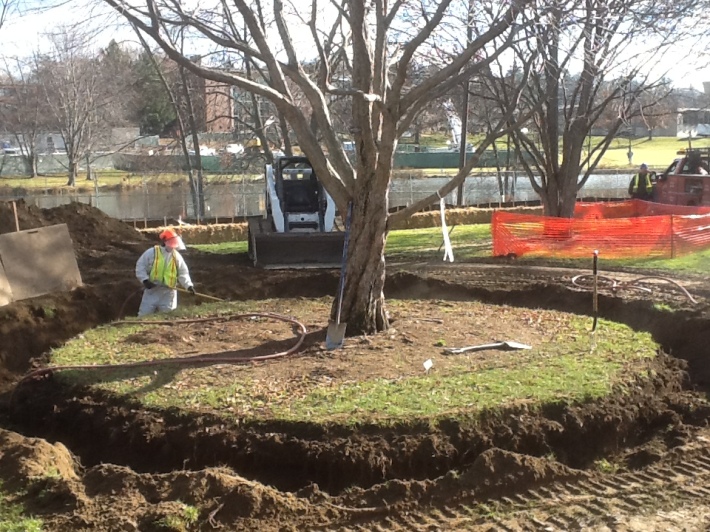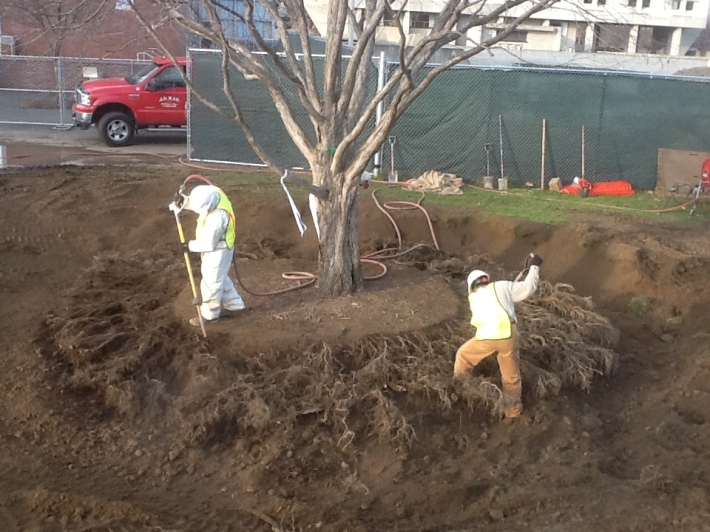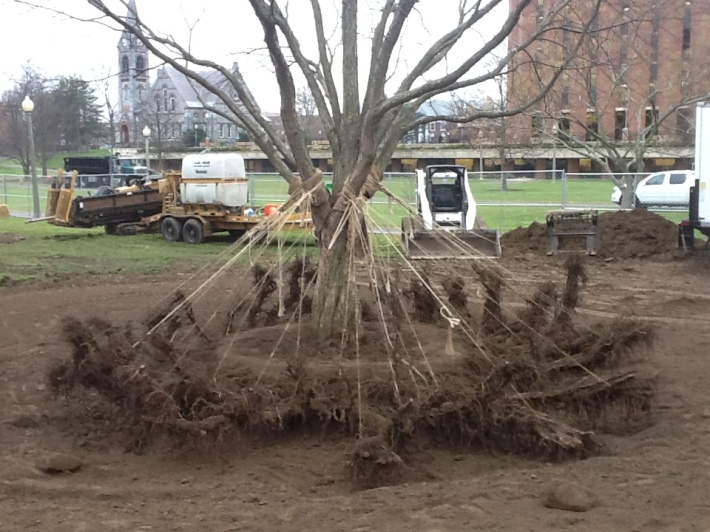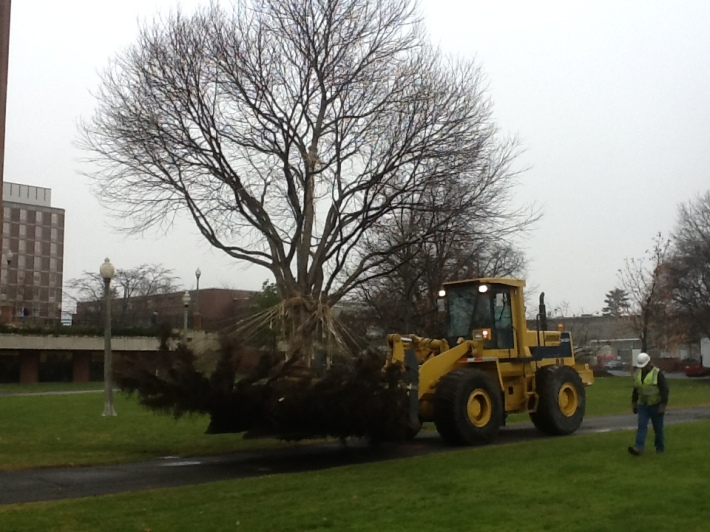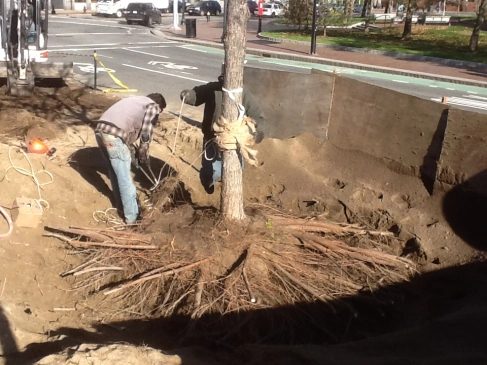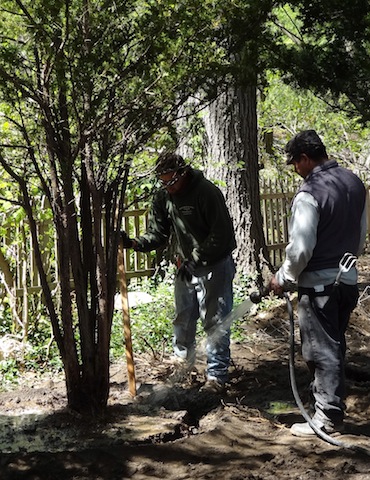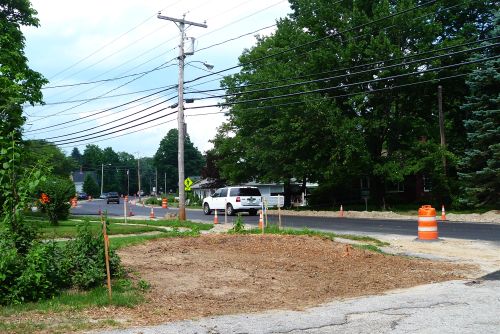I took a great class this past January at the Arnold Arboretum. It was called Grafting Techniques for Ornamental Trees, and was taught by Jack Alexander, the Arboretum’s Plant Propagator. Jack, who is not only an extremely talented plantsman but an excellent teacher, taught us how to prepare cuttings, how to make several different kinds of grafting cuts, how to fit scion and root stock together, wrap the graft point with an elastic band, and then wrap the whole shebang with Parafilm.
Anyway, at one point during the daylong class Jack had us take a break from grafting and showed the class some slides. Among them were shots of a grafting project that he had been commissioned, privately, to work on some years ago.
The tree, located on a property outside of Boston, was a 40-50′ high grafted weeping beech. It had been top-grafted at a point about 5′ from grade; the trunk below the graft point was about 30″ in diameter, while the trunk above it was considerably larger.
Hartney Greymont, Inc., arborists in charge of the tree, had noticed flagging in the tree’s canopy in 1984. They hypothesized that the roots could not get enough water up through the constriction to the tree’s crown, and that photosynthate was accumulating above the graft point. They called in Jack Alexander to do some grafting that could help improve the situation.
The problem: Constriction at the graft point was retarding the flow of water up to the tree’s canopy, and possibly preventing photosynthate from flowing down to the roots from the crown.
The solution: Remedial grafting, using four beech saplings to create supplemental trunks.
The process: In the fall of 1984, Hartney Greymont planted four 2-3″ caliper (3/4″ dbh) beech saplings around the tree, evenly spaced from each other and about 3′ out from the tree’s trunk. The saplings settled in over the winter. Jack, who had the experience and expertise to work comfortably with such a valuable tree, then grafted the tops of each sapling to the trunk of the specimen beech above the graft point. This process is called inarching. Jack believes he performed the grafts in April of 1985.

The newly inarched beech, with three of the four saplings planted and grafted above the beech's graft point visible here. Matching the cambium of the saplings to the cambium of the mature tree allows photosynthate from the tree's crown to flow down the sapling trunks, supplying them with nutrients that otherwise would serve to overenlarge the beech's trunk just above the graft point, making the tree more susceptible to failure. The inarched saplings make a conduit for water to flow upwards into the canopy from the roots as they benefit from the abundance of photosynthate, and in turn enhance the tree's stability. Photo Copyright © 1985 Jack Alexander, used by permission.
The following year, one sapling had died, so Hartney planted another, and Jack grafted it to the tree in the spring of 1986. A total of four buttress trees now help support the specimen tree.
The result: Photosynthate flows down from the tree’s crown through the constricted graft point, as it always has, but it also flows down through the four inarched saplings. Because the saplings are being nourished by the mature crown of the specimen, over the last 26 years they have come to serve as living buttresses to the mother tree.
In Jack’s words: “By grafting additional rootstocks, we provided roots to provide more water to the top where it was flagging. The additional roots systems grew rapidly, tending to corroborate the opinion that there was a surplus of photosynthate accumulating above the graft union.”
A few weeks ago, in late April 2011, Carl Cathcart took me to see the beech. The house had been sold since the beech had been buttressed, but the current homeowner was kind enough to let us see and photograph it. Here are photos of it as it stands today. It was wonderful to see this behemoth and to read its character, especially knowing its history.

Carl Cathcart with the inarched specimen weeping beech.
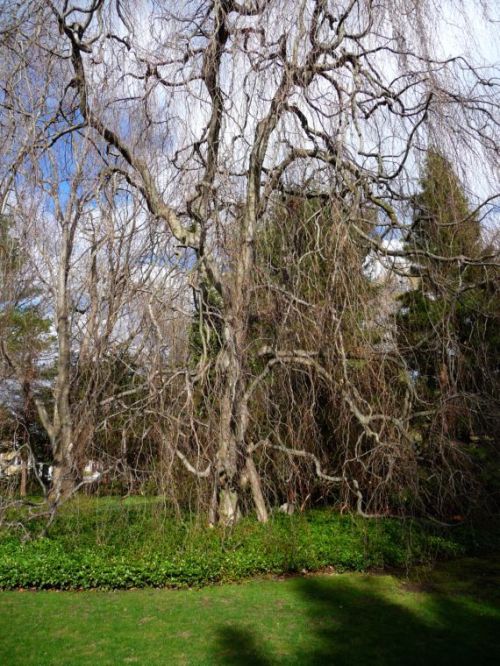
The beech from a different angle. What look like elephant legs under the tree are the ingrafted saplings that have now become living buttresses.

Three buttresses are visible in this image; the smallest is about 6" dbh. This photo was taken from about the same point as Jack Alexander's 1985 photo.
When I sent the photos to Jack, he wrote ” It’s nice to see these pics. The tree seems like an old friend.” You can see why — this is a tree with personality, and Jack did some remarkable work with it.
Propagator/Grafter: Jack Alexander
Arborist in charge: Hartney Greymont, Inc.
Read Full Post »
